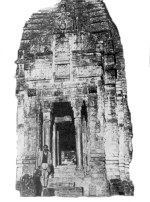|

Introduction
Chamba, formerly a
princely State for centuries is now a district and very important for its historical
associations, antiquities, natural features, temples and legends. The district derives its
name from the main town, which is now the district headquarters. It lies mostly astride
the main Himalayas and is bounded on the North-West and West by Jammu and Kashmir, on the
North, the North-east and East by Ladakh area of Jammu and Kashmir and Lahul and Spiti,
and on the South-east and South by the districts of Kangra and Gurdaspur.
The Mountain systems and ranges along with river basins
determine the natural divisions. There are three well defined snowy ranges and a number of
rivers, including the Bias, Ravi and Chenab. The springs, mountain glades, peaks, snow
fields, glaciers, ice caves, valleys, high passes, forests and pastures make the district
extremely interesting. The flora is typical Sub-Himalayan and Himalayan. Some specimens of
fauna and avi-fauna are rare.
More than ninety per cent of the population follows the
Hindu religion. There are some Arya-Samajis, Buddhist Tibetans, Muslims, Christians and
Tribals who follow their semi-animistic faith, Even the traditional Hindus have not
discarded certain beliefs like worship of trees, mountains or spirits of the soil. The Nag
cult (serpent worship) has a strong-, hold. But Siva and Shakti and the latter in various
forms along with Vishnu are the three well-known traditional Hindu gods that have a strong
hold on the Hindus of this district.
Author - P.C.Roy Choudary
|